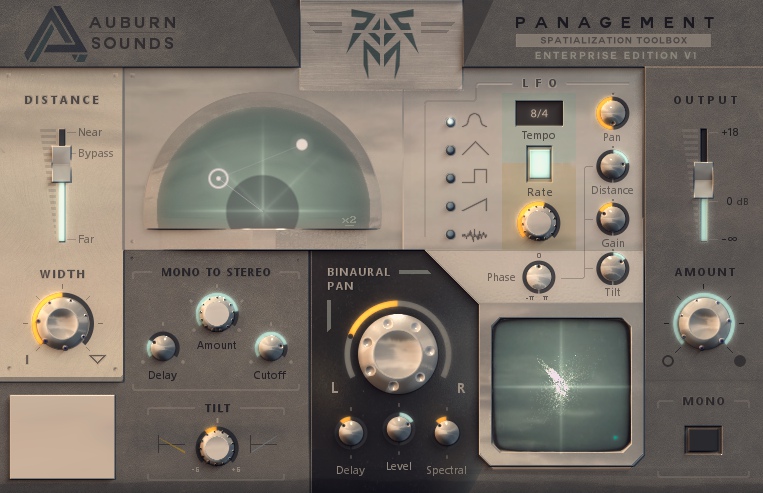I have been slowly lowering the Meier Crossfeed Plugin in foobar2K and am now down to about 5 coming from 20-22 a year or so ago. I am starting to wonder if I was liking the coloring rather than the intended blending of channels... what artifacts or tell-tale signs should one be looking for that would indicate that crossfeeding is distorting/coloring? Something in the bass perhaps? In fact, if anyone has a recommended music track to use with setting crossfeed levels with some key adjustment leveling tips that might actually quite be helpful. Any guidance or advice would be sincerely well received and appreciated as I am thinking about dropping the entire plugin.
Colouring is part of the existence of sound. Physical sounds exist in physical reality and colouring is part of that physical world. It's similar to objects and lighting. Shadows happen. Things happen and without those it doesn't look right, it's just badly rendered cgi. All colouring isn't the same. There's destructive colouring and expected colouring. An amp clipping a signal and causing distortion is destructive colouring. Reflection from the ceiling of the listening room is expected colouring and adds spatial cues that tell the listeners in which kind of acoustics they are listening. Lack of colouring is a problem if colouring is expected. Pure sinusoidals generated in a sound editor listened with headphones to add as little colourization as possible is dull as hell, because the sounds heard lack all possible spatial cues that would indicate how the sounds exist in physical reality. In a way such sounds "don't exist", but are imaginary, in our mind
almost outside physical reality. Such sounds are "half-existing." Expected colouring (reflections, ILD, ITD, ISD, reverberation etc.) make the sounds "full-existing." They interact with the acoustic reality and get coloured. So, the rule of thumb goes:
- Avoid destructive colouring unless it makes the sound "better" (in which case the colouring should be in the recording, not in the reproduction chain!)
- Expected colouring is
needed, but bad expected colouring (such as bad acoustics) is bad.
Now, finally to the issue at hand: Most recordings are mixed for loudspeakers and loudspeaker listening causes acoustic crossfeed colouring among other colouring related to room acoustics (in studios these are very mild thanks to the studio acoustics, but strong acoustic crossfeed happen anyway). So, those recordings are mixed to sound the best when there's normal acoustic crossfeed (left ear hears right speaker and vice versa) + mild controlled room acoustics colouring. Headphone crossfeed simulates the acoustic crossfeed. Typical headroom crossfeed level (from -12 dB to -6 dB) is rather mild compared to acoustic crossfeed. So, we colour the sound
less than speaker would do and doing so reduce excessive ILD (which confuse spatial hearing and cause listening fatique / lack of sonic realism). When strong crossfeed (something like -1 dB) is use, the colourization is similar to acoustic crossfeed except for the room acoustics, but often we don't need to reduce excessive ILD that much. Speakers make the sound very narrow with the acoustic crossfeed, but room acoustics (reflections, reverberation) restores the width. Speakers + room transform all recordings to almost the same width. Even mono recordings get width thanks to the acoustics, althou it's fake width. Very wide (ping pong stereo) recordings become almost the same as mono recordings. Speakers + room is kind a width regulator where the width is expected. With headphones we get whatever the recording is. Mono is mono and ping pong is ping pong. Only a handful of recordings happen the have expected width and work best without any tinkering in the form of crossfeed. Most recordings have excessive spatial information for headphone and tinkering is needed to get to expected value. Pretty much every recording has it's own proper crossfeed level based on how wild ILD it contains and it's pretty easy to learn to set the correct level, but a fixed crossfeeder in the range -8…-5 dB works pretty well with most recordings (some remain under-crossfed and some are somewhat over-crossfed).
Worrying about crossfeed colourization is kind of ridiculous, because in most cases it's milder than that with speakers and nobody worries about that! Also, our spatial hearing EXPECTS to hear certain correlation between ears. So, the
lack of crossfeed colourization is the real problem. The reason why people don't complain about speaker acoustic crossfeed is because people can't turn it off (unless they have crossfeed canceling prosessing).
Some people insist crossfeed loses detail, but that's "fake" detail caused by excessive spatiality. It's like sharpening video picture. Turning picture sharpness to max on your tv makes the picture look sharper, but it's fake sharpness: It doesn't make DVD look as good as Blu-ray. No, the DVDs look best when the sharpness level is natural, we have the detail level that the format allows. Properly crossfed sound allows the real detail come out under the fake detail, so not only is no real detail lost, but the detail isn't masked by fake information. People don't realize, that spatial hearing can decode the crossfeed process comparing left and right ear signals and that's why the strong acoustic crossfeed with speakers isn't a real problem either.
Ultimately it comes down this: Do you like listening with or without crossfeed? Which sounds more natural? Which cause less fatique?




















